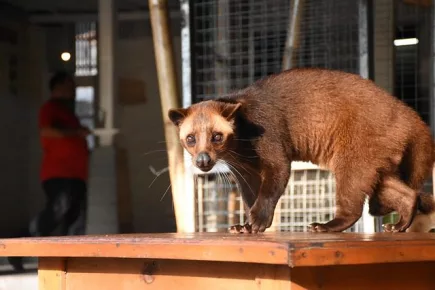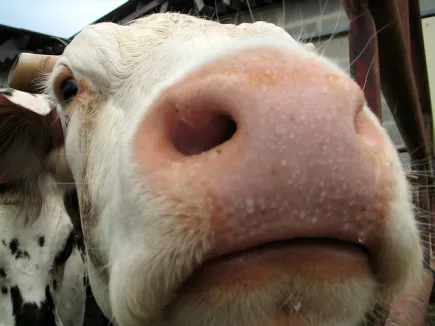Tag: animal
China: Zhengli & Daszak – Human-animal interactions and bat coronavirus spillover potential among rural residents in Southern China
Zhengli & Daszak study, September 2019 – “We conducted a cross-sectional study in the districts of Yunnan, Guangxi, and Guangdong, China… Serological testing of serum samples from 1,497 local residents revealed that 9 individuals (0.6%) in four study sites were positive for bat coronaviruses, indicating exposure at some point in their life to bat-borne SARSr-CoVs (n=7, Yunnan), HKU10-CoV (n=2, Guangxi), or other coronaviruses that are phylogenetically closely related to these. More...
USA: Michigan taxidermist reported infected by mink coronavirus variant with F486L and N501T mutations
In February 2021, a taxidermist living in Eaton County, Michigan, became infected with COVID-19. More...
More than 60 animals confirmed with Sars-Cov-2 infection
Of the more than 60 animals confirmed with SARS-CoV-2 infection in a study of more than 450 animals living in the Brazos County area Texas A&M study, less than a quarter were reported to show signs of disease around the time of the owner’s diagnosis, most commonly including sneezing, coughing, diarrhea, or being less active than normal. More...
11 escaped mink tested positive for SARS-CoV-2 coronavirus antibodies in Utah
“Serum samples from the 11 mink escapees tested positive for SARS-CoV-2 antibodies by virus neutralization”
We captured 102 mammals (78 rodents and 24 mesocarnivores). More...
Gorillas and lions infected with coronavirus in Prague zoo
A gorilla and two lions have tested positive for COVID-19 at the Prague Zoo, which is closed amid lockdown restrictions in the country. More...
Second wild mink tests positive for Sars-Cov-2 outside Oregon mink farm
Since December, wildlife biologists with USDA Wildlife Services, under the Oregon Department of Fish and Wildlife (ODFW) direction, have captured and tested more than a dozen animals, including ten opossums, three cats, two skunks, and three mink. More...
Mutations arising in SARS-CoV-2 spike on sustained human-to-human transmission and human-to-animal passage
“Spike mutations have also occurred during interspecies transfers of SARS-CoV-2 from humans to animals, both during establishment of experimental models of COVID-19 and as an unintended consequence of human interactions with domestic, curated and commercial animals.” More...
Experimental Infection of cattle with SARS-CoV-2 – “we demonstrated viral replication in two of the inoculated animals”
“We inoculated 6 cattle with severe acute respiratory syndrome coronavirus 2 and kept them together with 3 uninoculated cattle. More...







